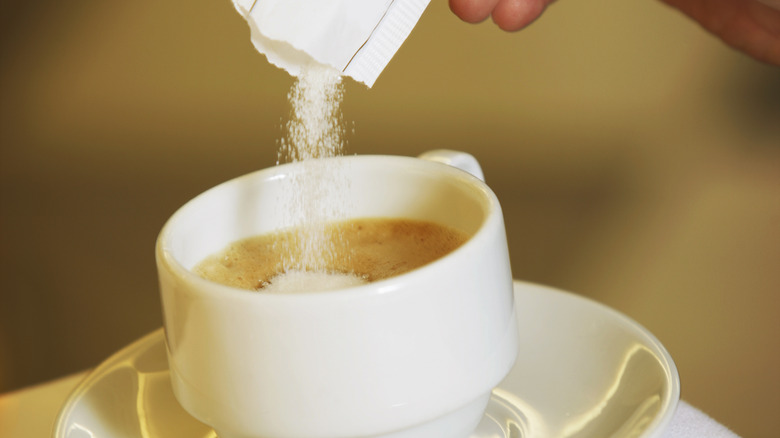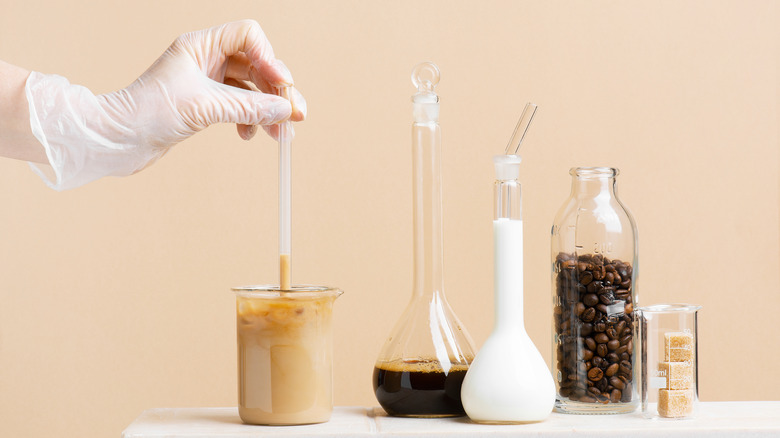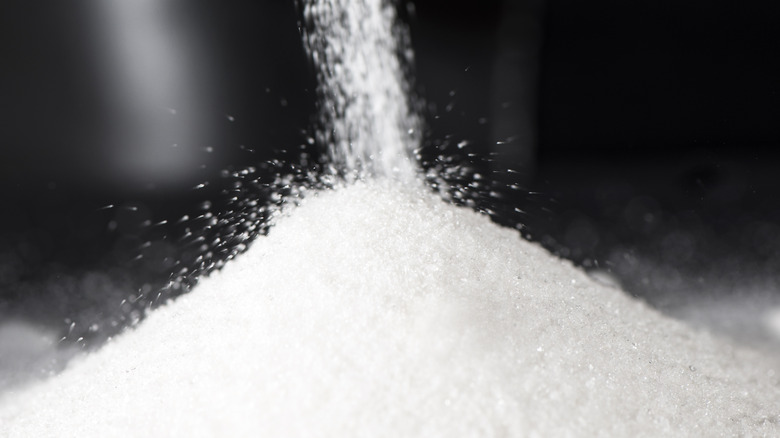There's A Scientific Limit To How Much Sugar You Can Put In Hot Coffee
Among the nearly three-quarters of Americans who enjoy a cup of coffee, most of us like it sweet. While more adventurous eaters might turn to some truly unconventional ingredients to add to their morning coffee, the most popular additive by far is good old-fashioned sugar. After all, the Dietary Guidelines for Americans points out that coffee and tea account for over 10% of our added sugar intake.
When adding sugar to your java, though, you should know that more is not always better (or sweeter). There's actually a point at which sugar will, in theoretical terms, stop sweetening your coffee. In other words, you're just dumping in calories without enhancing flavor. And you can identify that sweet spot (pun totally intended) so that the next time you're reaching for that second (or seventh?) packet of sugar, you'll know if it's worth the caloric hit. But fair warning: That sweetening threshold is much, much higher than you think.
Let's talk solutes and saturation
Sweetening your cup of joe involves the relatively simple science of a solvent and solute creating a saturated solution. In this case, coffee is the solvent, sugar comprises the solute, and your delicious sweetened java becomes the final solution. (Anyone else interpreting "solution" in more ways than one?) In a saturated solution of coffee, the coffee is holding the most sugar it possibly can. When you add sugar beyond that point, it will no longer dissolve and therefore won't contribute toward sweetening the beverage.
So how much sugar can your coffee take? Well, saturation depends heavily on solvent temperature, and a higher temperature will increase the saturation point. That means that the hotter the coffee, the sweeter you can make it. If you've ever tried to add sugar to iced coffee, only to discover the majority of it sink to the bottom into a silty sludge, it's because fewer sugar granules can stay dissolved in that colder brew. So scalding hot coffee also has the most potential to be sickeningly sweet.
How do you find the sugar saturation point of coffee?
Some observant stirring can help you identify how much sugar your preferred temperature of coffee will hold. Just keep adding sugar sprinkle by sprinkle until it stops dissolving and begins settling in the bottom of your cup. Sugar sludge signals your stopping point. Anything beyond that amount isn't contributing flavor.
If you're looking for the maximum amount of sugar you can effectively add, though, you're going to be shocked. Room temperature water (about 68 degrees Fahrenheit) can hold about 59 grams of sugar per ounce, whereas boiling water can carry over 140 grams per ounce. Most likely, your hot brew will fall somewhere in the middle. In coffee-drinking terms, that would translate to a range of roughly 118-280 teaspoons of sugar for an 8-ounce cup!
So it turns out that while added sugar can reach levels that defy dissolving, it's unlikely you'll ever reach it with hot coffee. With those kinds of numbers, we're quite confident that your doctor or nutritionist would recommend never trying to find your coffee's maximum sugar saturation point at home.


